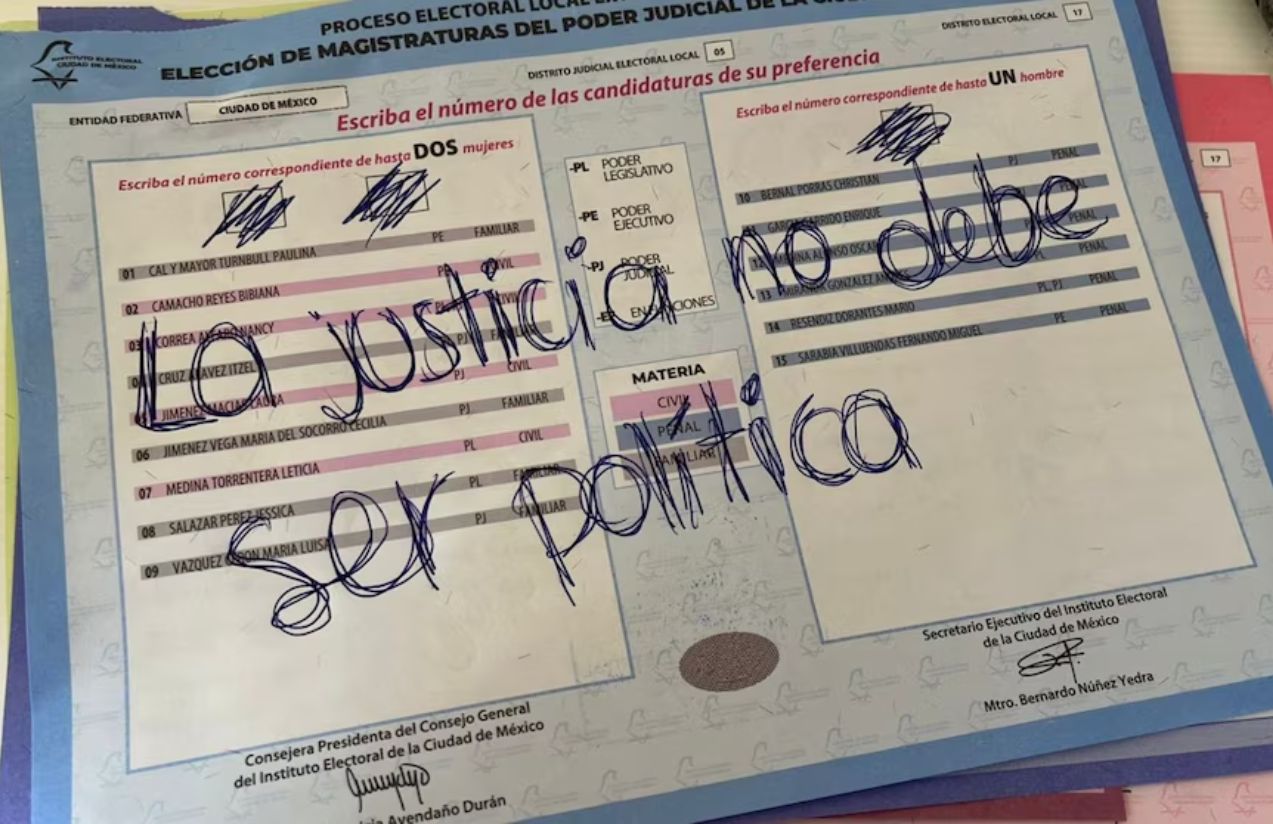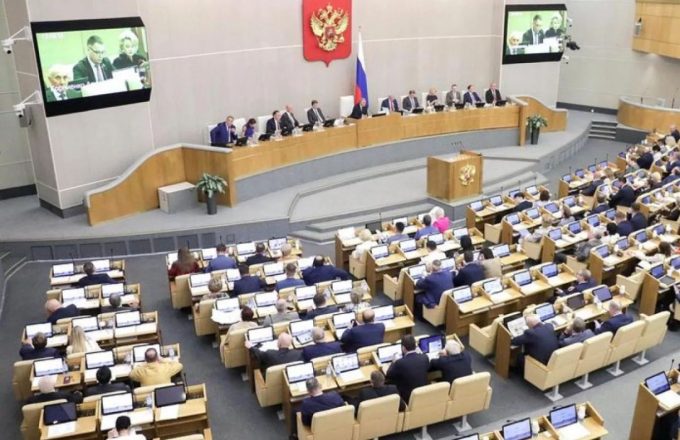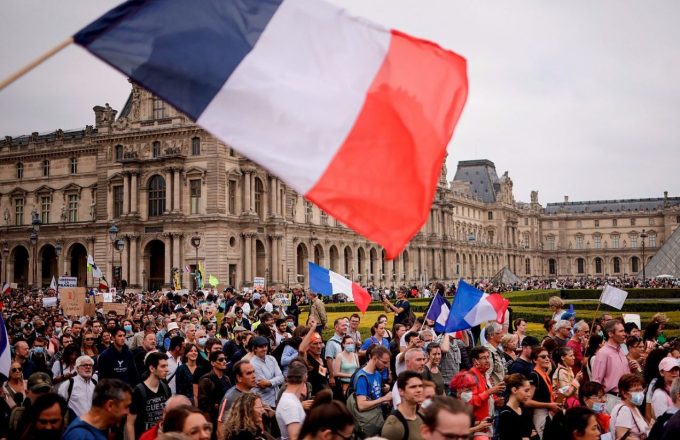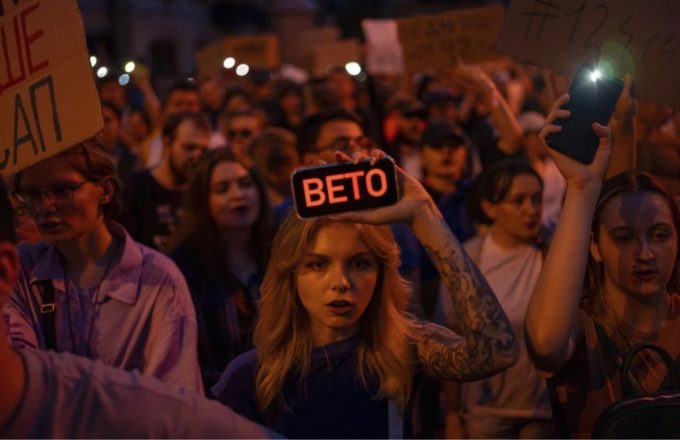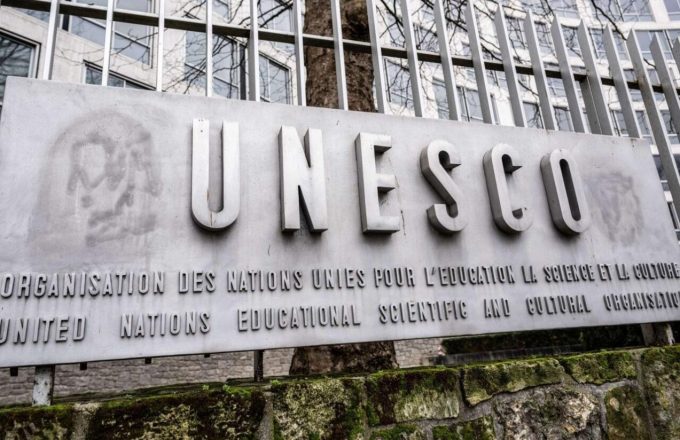With voter participation estimated between 12.57% and 13.32% of the electoral roll, Mexico held an unprecedented election on June 1: for the first time, citizens were called to the polls to renew the Judicial Branch.
Promoted by former President Andrés Manuel López Obrador and supported by current President Claudia Sheinbaum, the vote unfolded amid government triumphalism, public dissent, isolated incidents of violence, and widespread skepticism — reflected even on the ballots themselves.
For authorities, it was a “historic day.” For thousands of disillusioned citizens, a “farce.” Voting booths became not only polling stations but also sites of symbolic protest. Across several regions, reports of violence, low turnout, and demonstrations marked the day.
From early morning, irregularities cast a shadow over the judicial election. In Chiapas, INE president Guadalupe Taddei confirmed that 25 electoral packages had been stolen on May 31. According to INE councilor Jorge Montaño, at least 16 polling stations could not be set up. In District 05 of San Cristóbal de las Casas, some ballots were returned already tampered with, rendering them unusable.
Similar incidents were reported in Sinaloa. In Culiacán, citizens and polling staff alleged they had received pre-marked ballots, and some voters arrived with crib sheets, raising suspicions of voter manipulation. Images of empty ballot boxes also circulated on social media, reflecting low voter turnout in several areas.
Fear also played a role. In Ciudad Juárez, Chihuahua, authorities discovered coolers containing pig heads, feet, and ears, accompanied by signs warning: “If you vote, there will be consequences.” One was found outside an elementary school, others in working-class neighborhoods. Though unsigned, the messages were interpreted as direct threats to voters.
In Veracruz — where, in addition to the judicial vote, 212 municipal governments were up for election — political violence also flared. On the night of May 31, Estela Sánchez, campaign coordinator for Movimiento Ciudadano (MC) candidate Belem Palmeros, was attacked by armed men at her home. Her husband and another individual were injured. According to reports, the family had previously received threats, including photos of their house sent to Sánchez’s phone.
Elsewhere in Veracruz, an electoral official was reportedly assaulted under unclear circumstances. PAN state leader Federico Salomón Molina denounced the presence of armed men in Lerdo de Tejada. The local electoral body (OPLE) reported that at least six polling stations were shut down — two due to violence — and five others had to be relocated due to irregularities such as campaign materials being displayed inside voting areas.
Despite the high abstention rate, thousands of voters chose to intentionally nullify their ballots, turning them into canvases for protest. Handwritten messages expressed indignation, sarcasm, or despair. Phrases like “RIP to the Judicial Branch,” “This reform is not by the people, it’s by Morena,” and “Justice must not be political” went viral online. Others showed solidarity with social causes: “My vote goes to the disappeared and the searching mothers.” Frustration was also evident: “With hatred and sadness,” or “Sorry for the INE staff counting this crap.”
In Mexico City, protests also spilled into the streets. Hundreds marched down Paseo de la Reforma in what was dubbed the “March for Freedom” or “Black Sunday.” From the Angel of Independence to the Monument to the Revolution, demonstrators chanted: “The people rise against this farce” and “Elected judges, guaranteed corruption.”
The most telling statistic of the day was the low turnout. According to the INE, between 12.57% and 13.32% of the nearly 100 million registered voters cast a ballot. Guadalupe Taddei explained that the estimate was based on a representative sample and aimed to provide an immediate snapshot of citizen engagement.
That figure represents barely one-fifth of the turnout in the 2024 presidential election, when more than 60 million people voted. Nonetheless, both the federal government and the INE emphasized that the judicial election did not require a minimum number of votes to be considered valid.
Beyond abstention, what emerged was a clear divide. While the ruling party celebrated what it called a “democratic and historic” moment, a significant portion of the population responded with silence, abstention, or protest. Ballots, streets, and social media all spoke — but not in unison.


